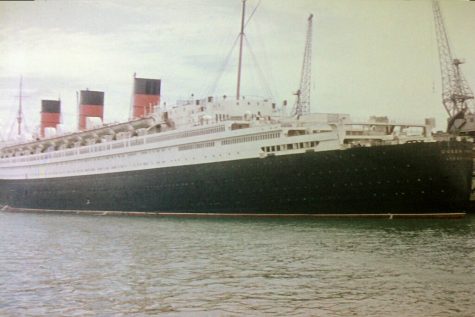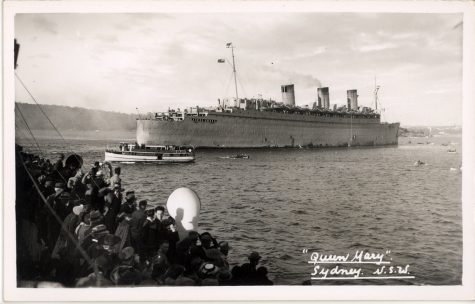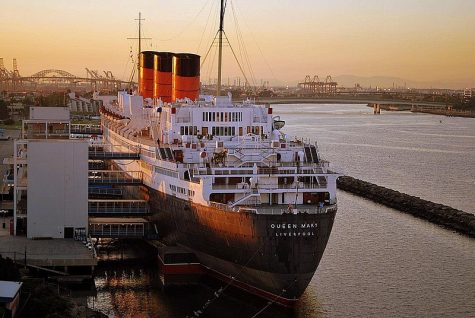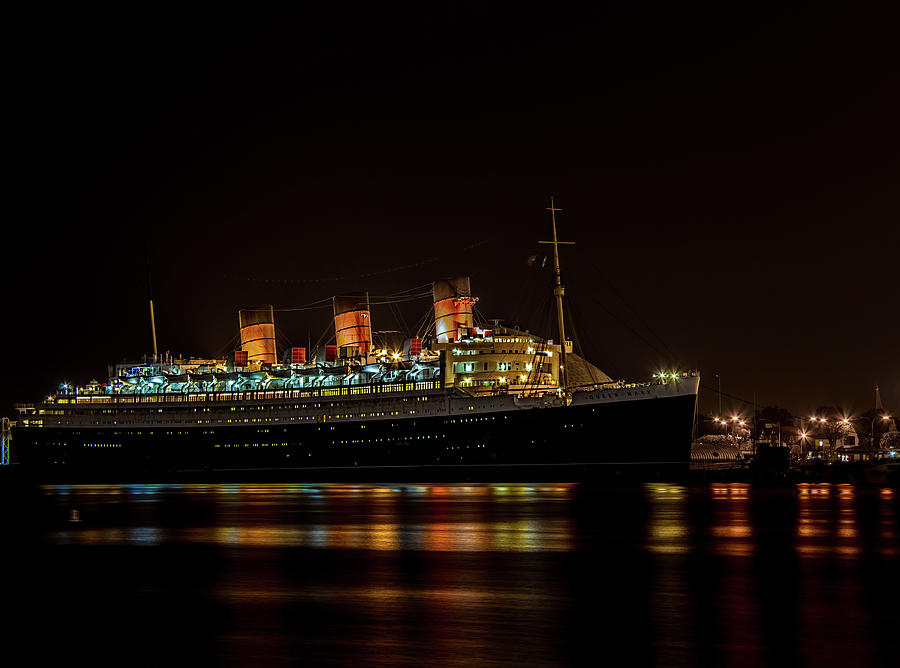The Queen Mary Hotel
POSTED March 30, 2023
Birth of the ship (1929-1935)
On April 3rd, 1929, The Cunard Line started plans to build new “super ocean liners” to replace the old ships Mauritania, Aquitania and Berengaria on the North Atlantic route. The next year on December 1st, 1930, right before the Great Depression hit, the first keel plate was laid at John Brown Shipyard for job #534, which would later be named the Queen Mary ship. Work stops on job #534 a year later on December 11th, 1931, because of an inability to secure bank loans during the Great Depression. Job #534 stands 80% complete at nine stories tall. In January, 1934, the British make advances of £4,500,000 to complete job #534, and after 28 months, construction resumed on job #534. On September 26th, 1934, job #534 was completed and named the Queen Mary after her Majesty Queen Mary. From September 28th, 1934, to November 6th, 1935, the installation of boilers, engines and almost all of the heavy machinery was completed. Funnels and both of the masts were placed in their positions.

Maiden Voyage (1936)
As the Queen Mary departed Southampton on May 27th, 1936, at 4:33 p.m. for her maiden voyage; she arrived in Cherbourg, France, at 8:47 p.m. From there, she departed at 12:39 a.m. the next morning. On June 1st, 1936, her arrival at pier 90 around 4:20 p.m. in New York took 5 days, 5 hours and 13 minutes to cross the Atlantic. On Queen Mary’s sixth round-trip she won the Blue Riband for the fastest North Atlantic crossing from French Line’s Normandie, though The Normandie won back the honor in 1937. Around August 3rd 1939, the Queen Mary won back the Blue Riband again from Normandie on her 48th round trip, holding the world record.
War Years (1939-1946)
When England and France went to war on Germany, the Queen Mary wasn’t a passenger liner anymore. With her size and speed, she was transformed to a troop ship in WWII and dubbed the “Grey Ghost”. She hauled as many as 15,000 men while playing a role in guiding the allies to victory. “40 Days and 40 Nights” on February 18th, 1942, the Queen Mary set sail from Boston to Sydney, Australia and she carried 8,398 troops and 905 crew. This was the first time she carried American troops. Sadly on October 2nd, 1942, The Queen Mary collided with the British light cruiser Curacoa. Using seventy tons of cement the crew temporarily patched to bow in Gourock, Scotland. May 7th, 1945, was VE DAY (Victory Europe) and the end of the war. In August, 14,833 troops and 1,000 crew were transported on The Queen Mary, totaling 15,833 on the ship at once.

Room B340 (1948)
In 1948, a British third-class passenger named Walter J. Adamson died in the room. As the reason for his death is unknown it is a mysterious case of what happened. In 1966, a woman staying in room B340 stated that she woke up to her covers pulled off her and a man standing at the end of her bed. After screaming and ringing for a steward, the man disappeared. Multiple encounters with the man have occurred with people reporting knocking on the door in the night, and seeing the lights in the bathroom turn on randomly. The hotel’s maids even started complaining about finding the water running when no one had been in the room for days as well as covers being pulled off right after a maid put them on.
Boiler room #4
A little girl has been spotted in the past few years hanging out in the boiler room. Normally, she is seen sucking her thumb, but at times, is seen with a doll.
Hatch door #13 (1966)
In 1966, the watertight doors to the engine and boiler rooms were ordered to be closed, and about 5 minutes later, an 18-year-old crew member was found crushed in Hatch #13. The boy was trapped with his arms by his sides as he showed signs of crushing injury in his chest, arm, and pelvis while bleeding from his nose. He was rushed to the hospital after being injected with morphine, but sadly the boy died shortly after. Now, his ghost is seen regularly, reported mostly by hearing someone whistling or running behind or even seeing him in the corner of their eye wearing blue coveralls. Some people get in more contact with this ghost by finding grease fingerprints on their faces or even having an “engineer” ask them about his wrench but when the guests go back trying to find him he is gone.
Long Beach (currently)

Currently The Queen Mary is now a hotel in Long Beach, California. The Queen Mary had 94 years of glory and is a living landmark with an incredible back story.
Sources –
https://queenmary.com/history/timeline/long-beach-years/
https://www.travelandleisure.com/hotels-resorts/most-haunted-hotel-america-queen-mary
